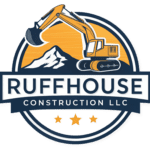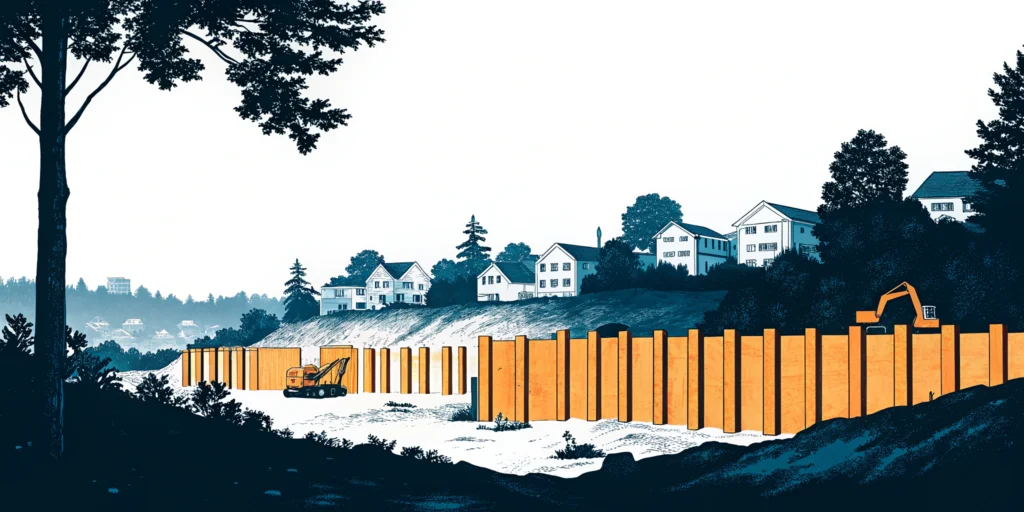Understand lagging panel walls
Lagging panels fit horizontally between piles to retain soil during excavation. You depend on these panels to support earth pressure and maintain safety. This method complements soldier pile and lagging wall design and aligns with excavation shoring best practices.
What are lagging panels?
Lagging panels are structural elements that span pile flanges. They create a continuous barrier against soil movement. These panels typically use timber, steel, or precast concrete.
Role in shoring systems
Panels lock into place as you drive piles. They work with soldier piles to form a rigid support wall. Proper installation of these elements is detailed in the installation of lagging panels.
Inspect walls regularly
Schedule inspections at least twice a year to catch issues early. Follow excavation shoring safety guidelines during your assessment. Document any movement, corrosion, or material damage.
Schedule biannual inspections
- Plan checks before winter and after spring thaw.
- Use level and measuring tape to detect shifts.
- Record readings on a consistent monitoring log.
Monitor structural movement
Check for gaps between panels and piles. Even small shifts can indicate under-pressure or soil wash-out. Address these changes promptly to prevent larger failures.
Clean and protect panels
Regular cleaning preserves panel strength and appearance. You can maintain timber, steel, or concrete surfaces with manufacturer-approved products. Avoid using de-icing salts that accelerate erosion.
Use appropriate cleaning agents
- Select mild detergents for uPVC or painted steel.
- Rinse thoroughly to remove residues.
- Follow manufacturer guidelines to avoid damage.
Avoid corrosive materials
Salt, chlorides, and certain de-icers can erode metal panels. Instead, use sand or non-corrosive ice melt around your excavation site.
Control vegetation growth
Weeds and roots can shift panels and undermine stability. Pull weeds weekly and apply weed killer biannually to key areas. Keep grass and groundcover healthy to hold soil in place.
Remove weeds frequently
- Inspect joints and small gaps for sprouting roots.
- Pull weeds by hand to prevent root fragments.
- Spot-treat with eco-friendly herbicide where necessary.
Maintain surrounding plants
Healthy foliage reduces erosion and supports drainage. Fill bare spots with grass seed or groundcover. This living barrier helps stabilize soil behind your wall.
Manage wall drainage
Proper drainage prevents water buildup that can overload panels. Clear built-in drainage weep holes and adjacent trenches. This simple step helps avoid hydrostatic pressure and freeze-thaw damage.
Clear drainage channels
- Remove debris and sediment from trenches.
- Use a hose or compressed air to open weep holes.
- Inspect perforated drain pipes for blockages.
Prevent water pooling
- Grade surrounding soil away from the wall face.
- Install gravel backfill to promote percolation.
- Avoid chemical ice melt near drainage features.
Repair panel damage
Prompt repairs extend service life and prevent costly fixes. Address chips, cracks, or rot as soon as you spot them. Small issues can escalate if left unattended.
Seal cracks and chips
- Clean the damaged area and let it dry.
- Apply compatible sealant or filler per manufacturer instructions.
- Smooth the surface and monitor for further degradation.
Consult professionals for major repairs
If you see panel warping or significant movement, call experts. Certified contractors ensure compliance with excavation shoring regulations and maintain project integrity.
Why choose RuffHouse Construction
- Regional expertise in Washington and Oregon excavation projects
- Proven reliability delivering on time and within budget
- Technical precision aligned with excavation support systems standards
When you’re ready to secure your site with expert lagging panel wall maintenance, contact RuffHouse Construction LLC for a consultation.
Frequently asked questions
What causes lagging panel damage?
Moisture, vegetation growth, freeze-thaw cycles, and corrosive materials can weaken panels over time.
How often should I inspect panels?
Inspect at least twice a year, ideally before winter and after spring thaw.
Can I use de-icing salts near my wall?
No. Salts can erode metal panels and damage concrete. Use non-corrosive alternatives.
How do I handle minor panel cracks?
Clean and dry the crack, then apply a compatible sealant. Monitor for expansion.
When should I call a professional?
Consult a contractor if you notice panel warping, significant movement, or severe corrosion.
Ready to start your own soldier pile wall project in Seattle, Tacoma, or anywhere in Puget Sound?
Learn how Ruffhouse Construction delivers safe, code-compliant soldier pile and lagging wall installations for any site.
See our Soldier Pile Installation Services for details and request a free estimate today.

